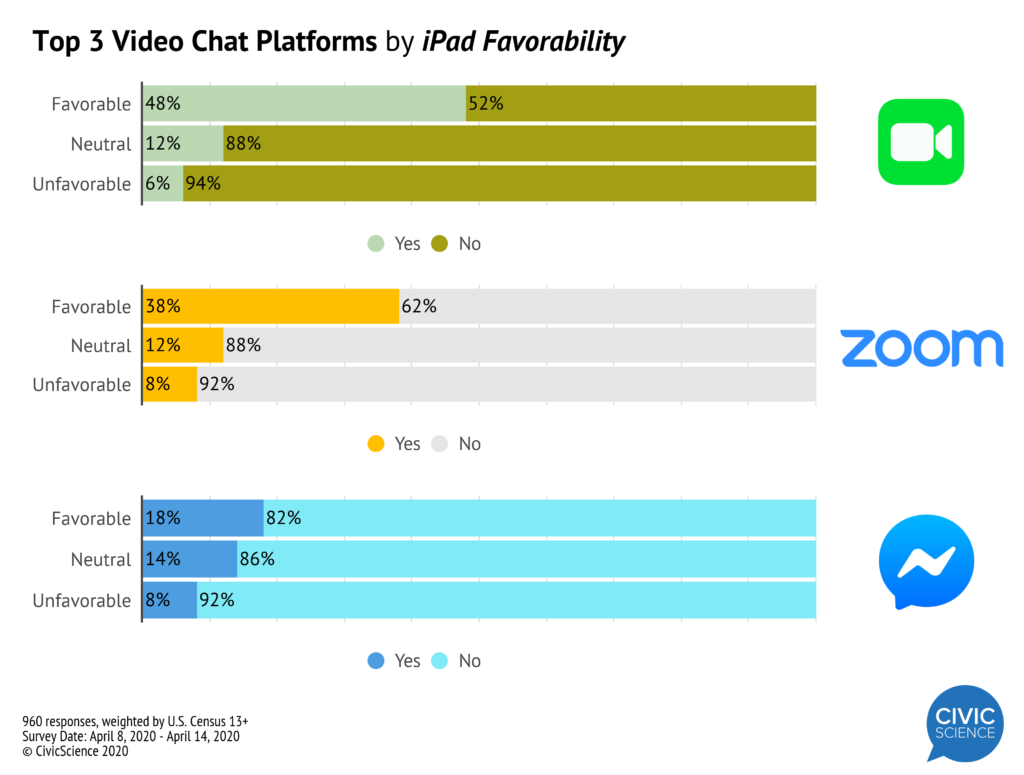Video chat – long the domain of corporate offices and teenagers – has become part of the routine for millions of Americans as they find ways to cope while social distancing from those they love, like, or otherwise tolerate.
In fact, during the pandemic, over 45% of Americans 13+ have used one form or another of video chat solely for the purpose of catching up with friends or family. Gen Z leads in usage.
Another key takeaway: The Gen Z domination almost wholly consists of a massive gap in “chatting with friends or family.”
 And while there’s a clear trend line in what age group is using video chat services, there’s an equally clear line between what apps and services are being used.
And while there’s a clear trend line in what age group is using video chat services, there’s an equally clear line between what apps and services are being used.
When asked about which video chat services Americans are using the most during this time of isolation, the clear victors were FaceTime (27%), Zoom (24%), and Facebook Messenger (21%).
Drilling down a bit further on the market leaders, both Facetime and Zoom are dominated by Gen Z. One interesting wrinkle is the little pop Gen X gives to Zoom, perhaps owing to the fact that this generational cohort is in prime working years and if they’re working from home right now, they’ve probably grown accustomed to Zoom.
But the above is not the biggest takeaway on the generational front: While Gen Z is embracing Zoom and FaceTime, they are running away from Facebook Messenger at a monster rate, using it as a “top three” option at the lowest rate among all generational cohorts.
Across all ages and platforms, women are 15% more likely than men to be using video chat services to hang out with friends right now.
iPad Lovers Favor the Leaders
Another interesting wrinkle for the market leaders: Apple iPad lovers are using Zoom and Facetime at significantly higher levels than people who have neutral or negative views of the iPad. These drastic differences were not seen with Facebook Messenger.  The FaceTime/iPad connection makes sense, as FaceTime is an iOS-only app. But Zoom isn’t, and CivicScience will certainly be tracking if the Zoom rocket ship takes away FaceTime market share post-coronavirus.
The FaceTime/iPad connection makes sense, as FaceTime is an iOS-only app. But Zoom isn’t, and CivicScience will certainly be tracking if the Zoom rocket ship takes away FaceTime market share post-coronavirus.
Overall, people preferring to video chat as opposed to talking on the phone is trending up since the pandemic started, and there’s no reason to expect that to stop anytime soon.
The big question for video chat providers, of course, is what happens after. Will video chat become even more ingrained in the day-to-day life of Americans? Time will tell, and CivicScience will be watching.









